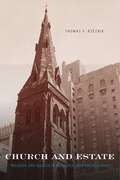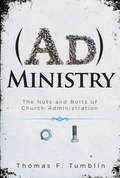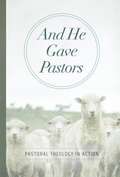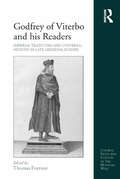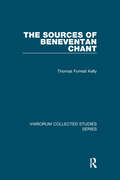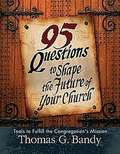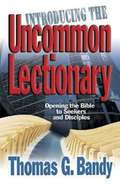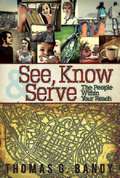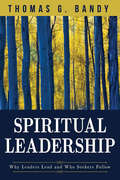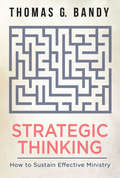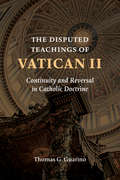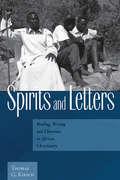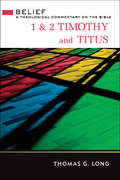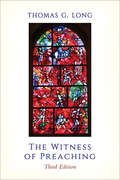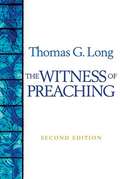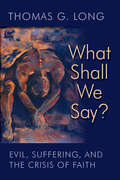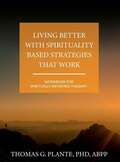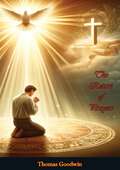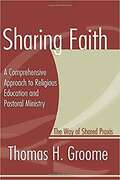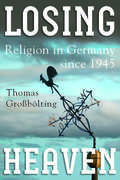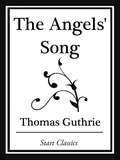- Table View
- List View
Church and Estate: Religion and Wealth in Industrial-Era Philadelphia
by Thomas F. RzeznikIn Church and Estate, Thomas Rzeznik examines the lives and religious commitments of the Philadelphia elite during the period of industrial prosperity that extended from the late nineteenth century through the 1920s. The book demonstrates how their religious beliefs informed their actions and shaped their class identity, while simultaneously revealing the ways in which financial influences shaped the character of American religious life. In tracing those connections, it shows how religion and wealth shared a fruitful, yet ultimately tenuous, relationship.
Church and Estate: Religion and Wealth in Industrial-Era Philadelphia
by Thomas F. RzeznikIn Church and Estate, Thomas Rzeznik examines the lives and religious commitments of the Philadelphia elite during the period of industrial prosperity that extended from the late nineteenth century through the 1920s. The book demonstrates how their religious beliefs informed their actions and shaped their class identity, while simultaneously revealing the ways in which financial influences shaped the character of American religious life. In tracing those connections, it shows how religion and wealth shared a fruitful, yet ultimately tenuous, relationship.
AdMinistry: The Nuts and Bolts of Church Administration
by Thomas F. TumblinShepherding the church requires up-to-date knowledge of budgets, insurance, financial management, personnel organization, audits, and legal liability. These responsibilities are complex and ever-changing. While as pastor, you are called to be a faithful steward of the church’s resources and an effective planner of its ministries, you need facts and skills to get your job done. This book will help you organize and weave your way through the often complex business of the church. Contents include: Definition of Ad-Ministry and What It Means to be an Ad-Minister A Theological Model for Ad-Ministry The Church as an Organization Stewarding People—Paid and Unpaid Staff Staffing the Volunteer Organization Stewarding Resources—Finances and Budgeting Stewarding Places and Spaces Stewarding Fiduciary Responsibility—Legal and Liability Issues Stewarding the Mission of God Strategic Planning to Fulfill God’s Call on Your Congregation Includes templates, and samples, including Church Staff Review forms, Staff Growth Plans, Offering Tracking Logs, Financial Statements, Property Inventory Worksheets, and Emergency Procedures Worksheets.
And He Gave Pastors: Pastoral Theology in Action
by Thomas F. ZimmermanOffers insights into pastors' personal and devotional lives, legal affairs, counseling, resumes, and other aspects of pastoring.
Godfrey of Viterbo and his Readers: Imperial Tradition and Universal History in Late Medieval Europe (Church, Faith and Culture in the Medieval West)
by Thomas FoersterThis collection provides a systematic survey of the wide readership the works of Godfrey of Viterbo enjoyed in the late Middle Ages. In the last years of the twelfth century this chronicler and imperial notary wrote a series of historical collections that gained considerable and lasting popularity: between the thirteenth and fifteenth centuries, his works were copied in elaborate manuscripts in almost all of Latin Europe. This wide distribution is particularly surprising for an author like Godfrey whom modern historians have never credited with any importance at all, as they considered his works chaotic and historically unreliable. Yet Godfrey was certainly one of the most daring historiographers of his time. In his works, the lineage of the Hohenstaufen emperors Frederick Barbarossa and Henry VI is traced directly to Charlemagne and Augustus, to the kings of Troy and of the Old Testament, and to Jupiter and everyone who, in his view, wielded imperial power in the past. Godfrey was a herald of the new political ideas the Hohenstaufen developed after the years of defeat against the papacy and the Italian communes, but also a universal chronicler whose interests reached far beyond the political issues of his day. Bringing together a group of specialists on manuscripts and historical writing in late medieval England, Spain, Italy, Germany, Bohemia and Poland, this volume aims to revive Godfrey’s reputation by demonstrating how his works were understood by medieval readers.
The Sources of Beneventan Chant (Variorum Collected Studies #980)
by Thomas Forrest KellyThe area whose capital was the southern Lombard city of Benevento developed a culture identified with the characteristic form of writing known as the Beneventan script, which was used throughout the area and was brought to perfection at the abbey of Montecassino in the late eleventh century. This repertory, along with other now-vanished or suppressed local varieties of music, give a far richer picture of the variety of musical practice in early medieval Europe than was formerly available. Thomas Forrest Kelly has identified and collected the surviving sources of an important repertory of early medieval music; this is the so-called Beneventan Chant, used in southern Italy in the early middle ages, before the adoption there of the now-universal music known as Gregorian chant. Because it was deliberately suppressed in the course of the eleventh century, this music survives mostly in fragments and palimpsests, and the fascinating process of restoring the repertory piece by piece is told in the studies in this book. A companion volume to this collection also by Professor Kelly details the practice of Medieval music.
95 Questions to Shape the Future of Your Church
by Thomas G. Bandy95 Questions to Shape the Future of Your Church is a comprehensive commentary on systemic change for the church. It combines the spirit of Luther's 95 Theses with depth of insight akin to Luther's reformation catechism. This book will be essential for every congregational, denominational, and seminary bookshelf. Church leaders and members all yearn for a new Reformation that will realign Christian congregations with God's mission. This book frames the right questions, and focuses the right answers. It helps church leaders do the hard work of assessment and planning. The next Reformation will be an extraordinarily practical endeavor. Leaders need to apply the tactics that will leverage the greatest change, and guide the church deeper into the mystery of Christ and further in companionship with Christ. We want to be faithful. Now we know how to be faithful.
Introducing the Uncommon Lectionary: Opening the Bible to Seekers and Disciples
by Thomas G. BandyLays out the plan for a collection of readings from Scripture designed for the needs of seekers and the unchurched.The church has used lectionaries–lists of scriptures to be read on particular Sundays throughout the year–across its long history. Yet most lectionaries are inward-looking: they presuppose hearers who are familiar with the biblical story and accustomed to gearing their lives around the Christian year.Yet in the increasingly pagan world of North America, the church’s task is to reach out to those who are spiritually hungry, yet unfamiliar with the Christian story. In this important new work Tom Bandy has given those who plan and lead worship a new lectionary, specifically geared to the needs of seekers. He lays out a plan for a trip through the central biblical narratives, the purpose of which is to provide seekers with a basic understanding of the gospel, and to call disciples to a deeper experience of Christian faith.
See, Know & Serve the People Within Your Reach
by Thomas G. BandyIn See, Know & Serve, Tom Bandy shows how the transition between Christendom and Post-Christendom is unfolding at different speeds and with different twists in diverse regions and places, and that this development makes standardizing ministry practices, or using collections of "best practices," unsuccessful in growing God's mission. Bandy presents startlingly new ways to view congregations and communities, enabling leaders to understand the people within their reach on a granular level. The author demonstrates with real-world examples how organizations can translate this information into practical strategies and tactics. The book includes helpful charts and diagrams, making the material surprisingly easy to digest and share. This important, groundbreaking and convicting book lays out with depth and clarity a pioneering new way forward for every church and every mission-focused organization. Bandy shows how we can see the people in our communities with unparalleled clarity, so that we can serve them—fulfilling our mission—effectively.
Spiritual Leadership: Why Leaders Lead and Who Seekers Follow
by Thomas G. BandyThe idea that certain kinds of people gravitate toward certain kinds of leaders has been around for a long time. There are exceptions and degrees of commitment, of course. People (as individuals) are complicated and changeable. On the other hand, people (as groups) are remarkably consistent and predictable.There are patterns. The typical follower of this leader has these characteristics. The typical follower of that leader has those characteristics. Conversely, this group of people tends to look for, believe in, and listen to this kind of leader; and that group of people tends to look for, believe in, and listen to that kind of leader. There are trends. Certain kinds of people are more responsive to certain kinds of leaders. Certain kinds of leaders seem to be more empathic toward, and understanding of, certain kinds of people. They seem to know some contexts, certain needs, and distinct attitudes better than others. If you follow the career of a leader, you can anticipate who they will gather around them and where they will be most effective.Bandy shows how this is true for church leaders too and introduces ideas of different types of leaders attracting different groups of followers. Knowing your "type" will help you know who will be attracted to your leadership style.
Strategic Thinking: How to Sustain Effective Ministry
by Thomas G. BandyLearn to set priorities and have the courage to take reasonable risks.Church leaders know how to think reactively. They know how to recognize their strengths and weaknesses and identify their opportunities and threats. They react to any number of emerging situations. What they don't do is think ahead to sustain effective ministries.They know how to plan strategically. They know how to choose new curricula, tap new sources of funding, recruit committees, and manage time. Church leaders often do not know how to think strategically, looking around and ahead to keep pace with society. Five year plans become irrelevant after five weeks. Strategies generated from leadership retreats collect dust in closets. In Strategic Thinking, Tom Bandy provides step-by-step plans to guide church leaders to set boundaries, align resources to visions, and hold church leaders and members accountable for integrity and purpose. In this book, you will learn how to reliably and regularly research the community surrounding your church, discern divine presence, and assess effectiveness. You'll find tools to help you set priorities and have the courage to take reasonable risks.It is possible for church leaders to think strategically. Do not unnecessarily throw up your hands in despair, react to whatever happens next, or surrender to some authority (individual or institutional) that will tell you what to do. The methods in this book provide a way to make good decisions and timely adjustments to get measurable results.
The Disputed Teachings of Vatican II: Continuity and Reversal in Catholic Doctrine
by Thomas G. GuarinoThe Second Vatican Council (1962–1965) radically shook up many centuries of tradition in the Roman Catholic Church. This book by Thomas Guarino, a noted expert on the sources and methods of Catholic doctrine, investigates whether Vatican II&’s highly contested teachings on religious freedom, ecumenism, and the Virgin Mary represented a harmonious development of—or a rupture with—Catholic tradition.Guarino&’s careful explanations of such significant terms as continuity, discontinuity, analogy, reversal, reform, and development greatly enhance and clarify his discussion. No other book on Vatican II so clearly elucidates the essential theological principles for determining whether—and to what extent—a conciliar teaching is in continuity or discontinuity with antecedent tradition.Readers from all faith traditions who care about the logic of continuity and change in Christian teaching will benefit from this masterful case study.
The Disputed Teachings of Vatican II: Continuity and Reversal in Catholic Doctrine
by Thomas G. GuarinoThe Second Vatican Council (1962–1965) radically shook up many centuries of tradition in the Roman Catholic Church. This book by Thomas Guarino, a noted expert on the sources and methods of Catholic doctrine, investigates whether Vatican II&’s highly contested teachings on religious freedom, ecumenism, and the Virgin Mary represented a harmonious development of—or a rupture with—Catholic tradition.Guarino&’s careful explanations of such significant terms as continuity, discontinuity, analogy, reversal, reform, and development greatly enhance and clarify his discussion. No other book on Vatican II so clearly elucidates the essential theological principles for determining whether—and to what extent—a conciliar teaching is in continuity or discontinuity with antecedent tradition.Readers from all faith traditions who care about the logic of continuity and change in Christian teaching will benefit from this masterful case study.
When No Wind Stirs: A Tale of Enlightenment and True Love
by Thomas G. HandA novel of two people in Japan who discover their deep spirituality and love through Christian and Buddhist meditations.
Spirits And Letters
by Thomas G. KirschStudies of religion have a tendency to conceptualise 'the Spirit' and 'the Letter' as mutually exclusive and intrinsically antagonistic. However, the history of religions abounds in cases where charismatic leaders deliberately refer to and make use of writings. This book challenges prevailing scholarly notions of the relationship between 'charisma' and 'institution' by analysing reading and writing practices in contemporary Christianity. Taking up the continuing anthropological interest in Pentecostal-charismatic Christianity, and representing the first book-length treatment of literacy practices among African Christians, this volume explores how church leaders in Zambia refer to the Bible and other religious literature, and how they organise a church bureaucracy in the Pentecostal-charismatic mode. Thus, by examining social processes and conflicts that revolve around the conjunction of Pentecostal-charismatic and literacy practices in Africa, Spirits and Letters reconsiders influential conceptual dichotomies in the social sciences and the humanities and is therefore of interest not only to anthropologists but also to scholars working in the fields of African studies, religious studies, and the sociology of religion.
1 & 2 Timothy and Titus: A Theological Commentary On The Bible
by Thomas G. LongThomas G. Long's insightful commentary on the Pastoral Epistles argues that these often-neglected letters are urgently important for readers today. Some of the issues faced by New Testament churches are ours as well: the lure and peril of "spirituality" for Christians, the character of authentic worship, the qualities needed for sound leadership, and the relationship between family life and the church. Long's interpretations of these books consider contemporary exegetical and theological outlooks and are presented through his seasoned homiletical and pastoral perspectives. Pastors will be strengthened by Long's view that the Pastoral Epistles can refresh our memory about what really counts in the Christian community and how important trustworthy leaders are.
Matthew (Westminster Bible Companion Ser.)
by Thomas G. LongThe original audience for the Gospel of Matthew included converts from Judaism who wrestled with how to be faithful to Jesus Christ under difficult circumstances in a changing world. The Gospel of Matthew became a first-aid manual for this church in the midst of a struggle. Thomas Long identifies this first audience and its faith within the social and religious context of the day and clarifies the structure of the Gospel. Providing examples of contemporary relevance, Long helps today's reader discern the significance of this guide for faithful living in today's church. Books in the Westminster Bible Companion series assist laity in their study of the Bible as a guide to Christian faith and practice. Each volume explains the biblical book in its original historical context and explores its significance for faithful living today. These books are ideal for individual study and for Bible study classes and groups.
The Witness of Preaching
by Thomas G. LongThis is a newly revised edition of one of the standard introductory preaching textbooks on the market today. Beginning with a solid theological basis, veteran preacher and best-selling author Thomas G. Long offers a practical, step-by-step guide to writing a sermon. Long centers his approach around the biblical concept of witness. To be a preacher, Long posits, is to be a witness to God's work in the world—one who sees before speaking, one whose task is to "tell the truth, the whole truth, and nothing but the truth about what is seen." <P><P>This updated edition freshens up language and anecdotes, contains an extensive new analysis of the use of multimedia and its impact on preaching, and adds a completely new chapter on plagiarism in preaching. Included for the first time are four complete sermons, with Long's commentary and analysis. The sermons were written and originally preached by Barbara Brown Taylor, Cleophus J. LaRue. Ginger Gaines-Cirelli, and Edmund Steimle. <P><P>With this third edition, The Witness of Preaching reaffirms itself as the essential resource for seminary students as well as new and experienced preachers.
The Witness of Preaching (2nd Edition)
by Thomas G. LongThis thorough and detailed revision of The Witness of Preaching is even clearer and more helpful than the first edition. Long has updated the language, expanded the key chapter on biblical exegesis, and included more examples of sermon forms, illustrations, and conclusions. He continues to critically engage the best thinkers in the field of homiletics, bringing into the conversation both important new voices and the latest works of those who appeared in the first edition. In addition, he addresses some of the new forces at work, such as the use of video clips and PowerPoint presentations in sermons.
What Shall We Say?: Evil, Suffering, and the Crisis of Faith
by Thomas G. LongTsunamis, earthquakes, famines, diseases, wars &mdash these and other devastating forces lead Christians to ask painful questions. Is God all-powerful? Is God good? How can God allow so much innocent human suffering?These questions, taken together, have been called the "theodicy problem," and in this book Thomas Long explores what preachers can and should say in response. Long reviews the origins and history of the theodicy problem and engages the work of major thinkers who have posed solutions to it. Cautioning pastors not to ignore urgent theodicy-related questions arising from their parishioners, he offers biblically based approaches to preaching on theodicy, guided by Jesus' parable of the wheat and the tares and the "greatest theodicy text in Scripture" -- the book of Job.
Living Better With Spirituality Based Strategies That Work: Workbook For Spiritually Informed Therapy
by Thomas G. PlanteLiving Better with Spirituality Based Strategies that Work: Workbook for Spiritually Informed Therapy is designed to serve as a practical workbook or companion book to Spiritually Informed Therapy that can be used by therapists with their clients, faculty with their students, or with the general public to put key evidence-based principles into actual practice. The workbook features numerous exercises and practical strategies that can help readers examine and implement core tenets from Jesuit spirituality into their everyday and contemporary life. The core tenets from Jesuit spirituality introduced throughout the book include seeing God (or the sacred) in all things, treating the whole person, using a pathway for decision-making focusing on discernment, ending the day with a five-step reflection, managing conflicts with accommodation, humility, the expectation for goodness, and more. The text features real-world case studies that demonstrate how Jesuit spirituality has helped individuals work through their challenges and discover greater overall wellness. Living Better with Spirituality Based Strategies that Work is an innovative workbook that can be paired with Thomas G. Plante's textbook, Spiritually Informed Therapy, or can be used independently by individuals interested in learning how faith-based principles can enrich their life and experiences.
The Return of Prayers: The Tidings Of Peace; And The Folly Of Relapsing (classic Reprint)
by Thomas GoodwinDelve into the profound and transformative practice of prayer with Thomas Goodwin's classic work, The Return of Prayers. This insightful book offers a deep exploration of how God responds to the prayers of the faithful, providing readers with a richer understanding of the dynamics of prayer and divine intervention.Thomas Goodwin, a renowned Puritan theologian and preacher, brings his extensive biblical knowledge and spiritual wisdom to this thoughtful examination of prayer. The Return of Prayers addresses the vital question of how and when God answers the petitions of His people, shedding light on the mysterious and often misunderstood process of divine response.In this timeless work, Goodwin discusses the various ways in which prayers are returned, including immediate answers, delayed responses, and answers that come in unexpected forms. He offers practical advice on how believers can recognize and discern God's answers to their prayers, encouraging them to remain patient, faithful, and attentive to God's will.Goodwin's writing is grounded in Scripture, with extensive references to biblical examples of answered prayer. He draws from the experiences of key figures in the Bible, such as Abraham, Moses, David, and the apostles, illustrating how their prayers were returned by God in powerful and meaningful ways.The Return of Prayers also explores the conditions and attitudes that make prayers more effective, emphasizing the importance of sincerity, humility, and perseverance. Goodwin's pastoral heart shines through as he offers comfort and encouragement to those who struggle with unanswered prayers, reminding them of God's faithfulness and sovereign wisdom.Join Goodwin on a journey into the heart of prayer, and discover the profound truths about how God returns the prayers of His faithful. The Return of Prayers is a timeless exploration of faith, patience, and the wondrous ways in which God responds to the cries of His people.
Sharing Faith: A Comprehensive Approach to Religious Education and Pastoral Ministry The Way of Shared Praxis
by Thomas GroomeProvides a comprehensive introduction to all aspects of religious education and pastoral ministry and gives an in-depth inquiry into the philosophical, educational and theological theories for sharing faith.
Losing Heaven: Religion in Germany since 1945
by Thomas GroßböltingAs the birthplace of the Reformation, Germany has been the site of some of the most significant moments in the history of European Christianity. Today, however, its religious landscape is one that would scarcely be recognizable to earlier generations. This groundbreaking survey of German postwar religious life depicts a profoundly changed society: congregations shrink, private piety is on the wane, and public life has almost entirely shed its Christian character, yet there remains a booming market for syncretistic and individualistic forms of “popular religion.” Losing Heaven insightfully recounts these dramatic shifts and explains their consequences for German religious communities and the polity as a whole.
The Angels' Song (Start Classics)
by Thomas Guthrie"The Angels' Song" is a piece of religious text written in 1866 by Scottish philanthropist and Minister of Fere st. John's Chapel Edinburgh, Thomas Guthrie.
